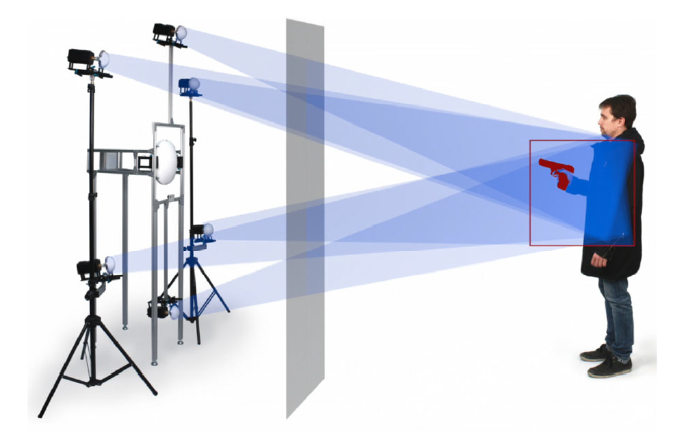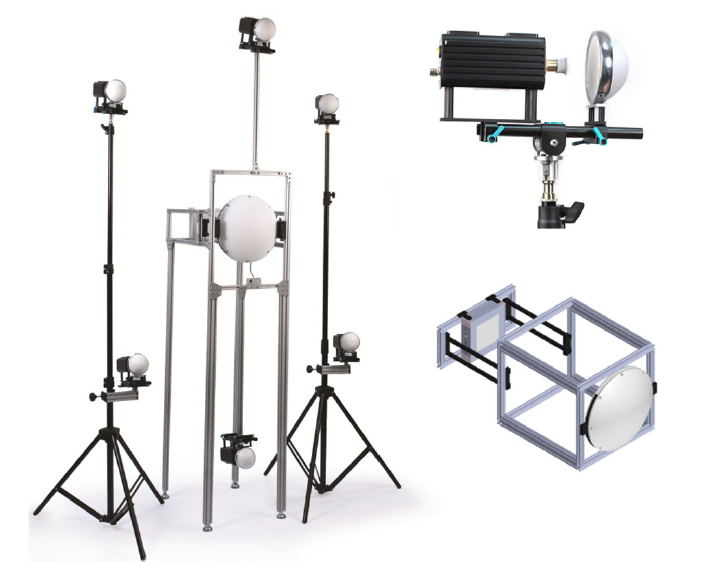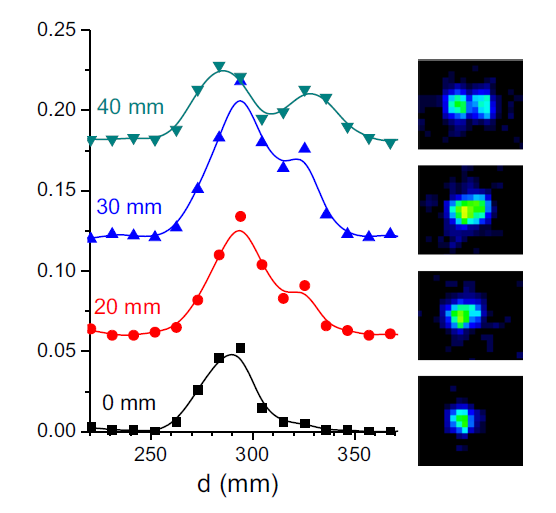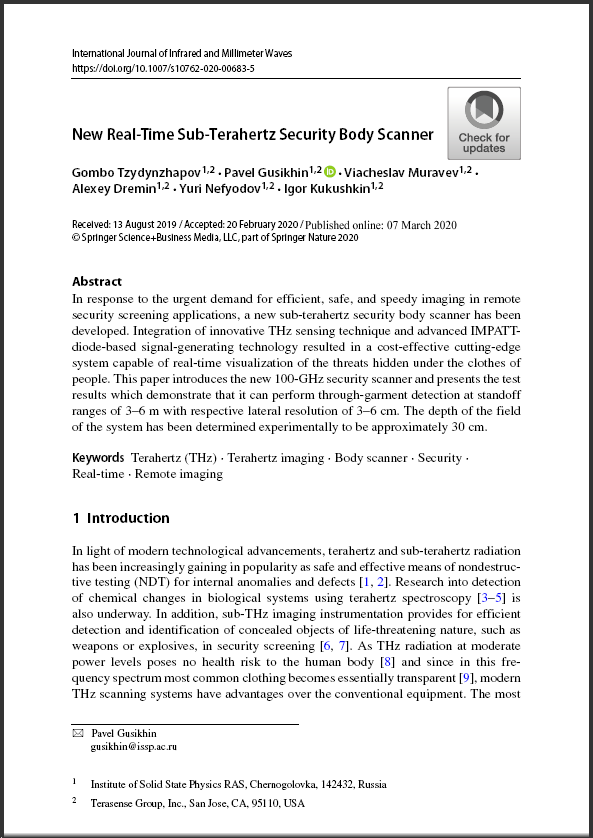A new scientific paper is published as an additional proof of concept for Real-Time Sub-Terahertz Security Body Scanner
 Nearly six years ago in response to the urgent demand for efficient, safe, and speedy imaging in remote security screening Terasense developed and manufactured our first stand-off terahertz security screening system for NDT inspection of people for hidden objects/threats under clothes. That system was purchased one of our good partners and system integrators in China, and we have to admit that back in 2016 that pilot project was a real leap of faith, both for our partner and for Terasense, indeed.
Nearly six years ago in response to the urgent demand for efficient, safe, and speedy imaging in remote security screening Terasense developed and manufactured our first stand-off terahertz security screening system for NDT inspection of people for hidden objects/threats under clothes. That system was purchased one of our good partners and system integrators in China, and we have to admit that back in 2016 that pilot project was a real leap of faith, both for our partner and for Terasense, indeed.
Since then our THz body scanner has survived a few upgrades and, of course, was added as our new commercially available product with a proper description posted at out web-site. We have issued a full-blown package of marketing materials, including datasheet, technical specification sheet, user’s manual and installation guides to support sales and answer hundreds of questions from our  serious-minded clients attentive to details. On top of that, we even made a comprehensive promotional video, which vividly shows the actual performance of the latest generation of our Terasense Security Body Scanner 2.0 and we always encourage our customers to watch it before making important decisions.
serious-minded clients attentive to details. On top of that, we even made a comprehensive promotional video, which vividly shows the actual performance of the latest generation of our Terasense Security Body Scanner 2.0 and we always encourage our customers to watch it before making important decisions.
However, despite the abundant information readily available on site or provided upon request, there are still some overly inquisitive customers, who often feel a burning need for additional proof of concept or demand some theoretical / physical explanations of certain physical phenomena employed in its operation. They often ask tricky questions that may puzzle even the best of our experts, all of who have PhD degrees in solid state physics, let alone our sales & marketing staff. Now, it looks  like we all can sigh with relief. A group of our leading scientists including Gombo Tzydynzhapov, PhD, · Pavel Gusikhin, PhD, · Viachesl av Muravev, PhD, . Alexey Dremin, PhD, · Yuri Nefyodov, PhD, and our CEO Prof. Igor Kukushkin PhD, wrote an article called ‘New Real-Time Sub-Terahertz Security Body Scanner’ that was recently published in Springer Science , International Journal of Infrared and Millimeter Waves (Published online 07 March 2020).
like we all can sigh with relief. A group of our leading scientists including Gombo Tzydynzhapov, PhD, · Pavel Gusikhin, PhD, · Viachesl av Muravev, PhD, . Alexey Dremin, PhD, · Yuri Nefyodov, PhD, and our CEO Prof. Igor Kukushkin PhD, wrote an article called ‘New Real-Time Sub-Terahertz Security Body Scanner’ that was recently published in Springer Science , International Journal of Infrared and Millimeter Waves (Published online 07 March 2020).
We highly recommend those insatiable and athirst for knowledge web-site visitors who are keenly interested in such topics as THz security screening to read that article. As usual it provides general information and operating characteristics of our THz body scanner and a brief history of its development that encompasses “Integration of innovative THz sensing technique and advanced IMPATT diode- based signal-generating technology, which resulted in a cost-effective cutting-edge system capable of real-time visualization of the threats hidden under the clothes of people”. It also gives Imaging results of a real-life visualization of body-borne concealed threats, such as a belt with explosives and a gun, obtained by the new sub-THz security body scanner .
But in addition to that, the article offers a very specific information about lateral resolution capabilities, the depth of field of the system that was determined experimentally, E-plane and H-plane radiation patterns of the horn antenna used with IMPATT-diode source. It also describes how the position of the collimating lens relative to the source can effect THz image, provides distribution of irradiated power  measured at various distances from the collimating lens. Most importantly for those naysayers is that the article gives a scientific basis backed up with calculations of the system resolution, interprets test results, as well as backs up measurement results for the depth of field and contains a lot more interesting data.
measured at various distances from the collimating lens. Most importantly for those naysayers is that the article gives a scientific basis backed up with calculations of the system resolution, interprets test results, as well as backs up measurement results for the depth of field and contains a lot more interesting data.
For instance, the paper explains why it is expedient (cost-effective) to use the THz sensor arrays with bigger pixel size & pitch 3mm , which does not lead to any degradation in cross-range resolution capabilities. This upgrade allowed us to considerably reduce the overall price of the system as compared to its previous configuration with sensor array having pixel pitch 1.5mm typically used for other our 2D terahertz cameras.
If any of this topic rings the bell, you are welcome to download the article (https://doi.org/10.1007/s10762-020-00683-5) or ask your account manager to send it.